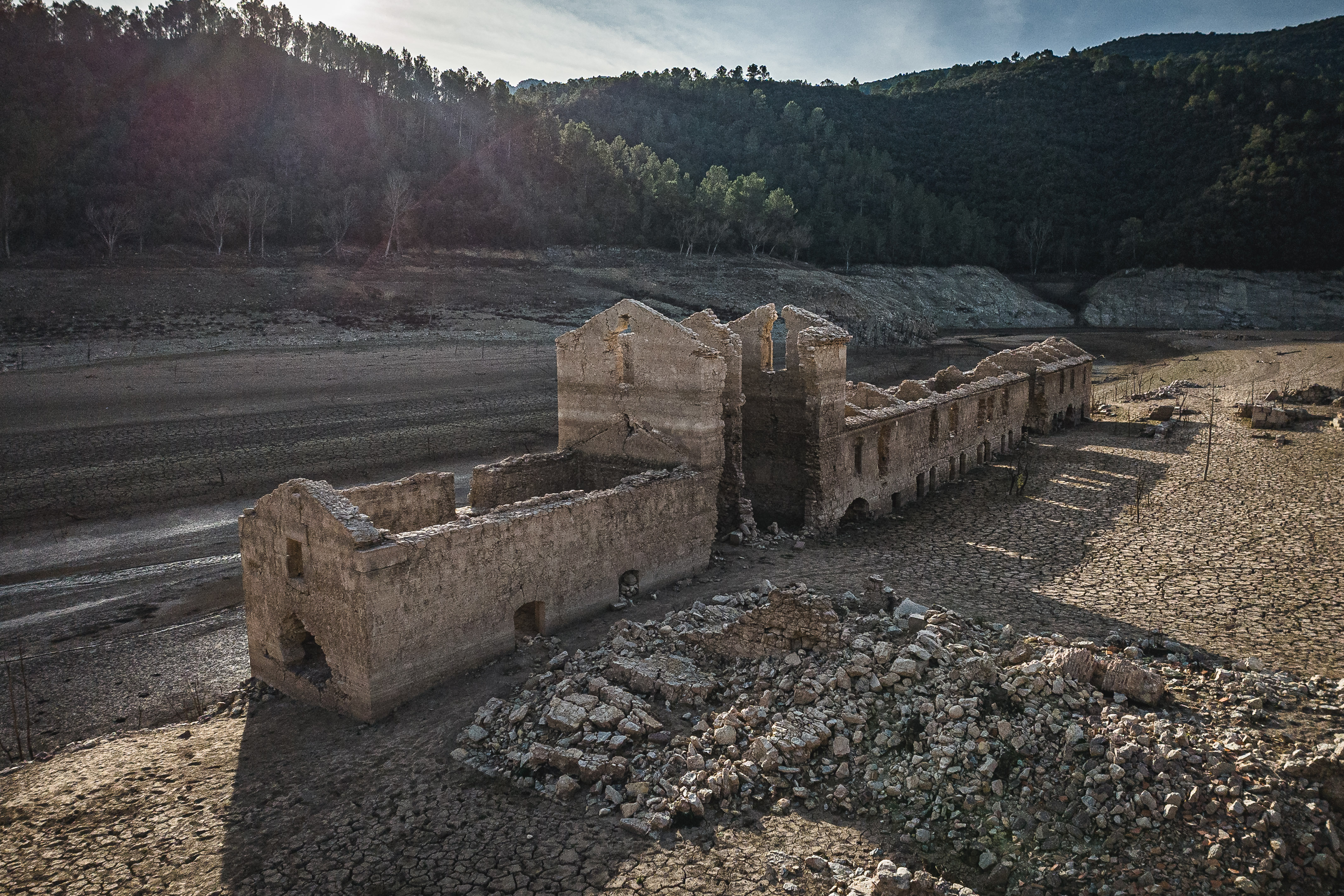18th century cannonball factory emerges from dry reservoir
Severe drought exposes remains of Sant Sebastià Foundry in northern Catalan swamp

The drought that has been ravaging Catalonia for months is leading to some striking images throughout the territory.
A symbol of drought in Catalonia is the image of the 11th-century sunken church emerging from the Sau reservoir when water levels are low.

Normally, this Romanesque church is barely visible, with just the tip of its tallest tower peering out above the water. But now, amid a drought emergency in large parts of Catalonia, the entirety of the structure is visible, along with other buildings that used to make up the old town that was known as Sant Romà de Sau, which was sunken in the early 1960s to create the Sau reservoir.
Now, further in northern Catalonia near the French border, an 18th-century ammunitions factory is emerging from the Darnius-Boadella swamp.

The remains of the Royal Foundry of Sant Sebastià de la Muga, which made ammunition for cannons, are usually covered by the water of the Muga River, but the long-abandoned facility is now completely visible. Some ruins of the hermitage of Sant Sebastià can also be seen, as water levels dry up.
The drought that has led the Catalan government to declare a state of emergency in much of the territory has left the Darnius-Boadella reservoir at 11.7% of total capacity. Of the 61 cubic hectometres it can store, it now has only 7.13.

This water level is four percentage points below the average of all reservoirs in Catalonia, which are currently at 15.44%. Below 16% is considered to be a drought 'emergency' according to government protocol, which means various restrictions on the use of water are introduced.

The president of the Ecologists of Catalonia association, Joan Vázquez, explained to the Catalan News Agency that the flow of this river has reduced by 96% in comparison to what was foreseen in the 2005 flow plan (1,200 liters per second) and that "with only 3% it's almost impossible for us to have water."